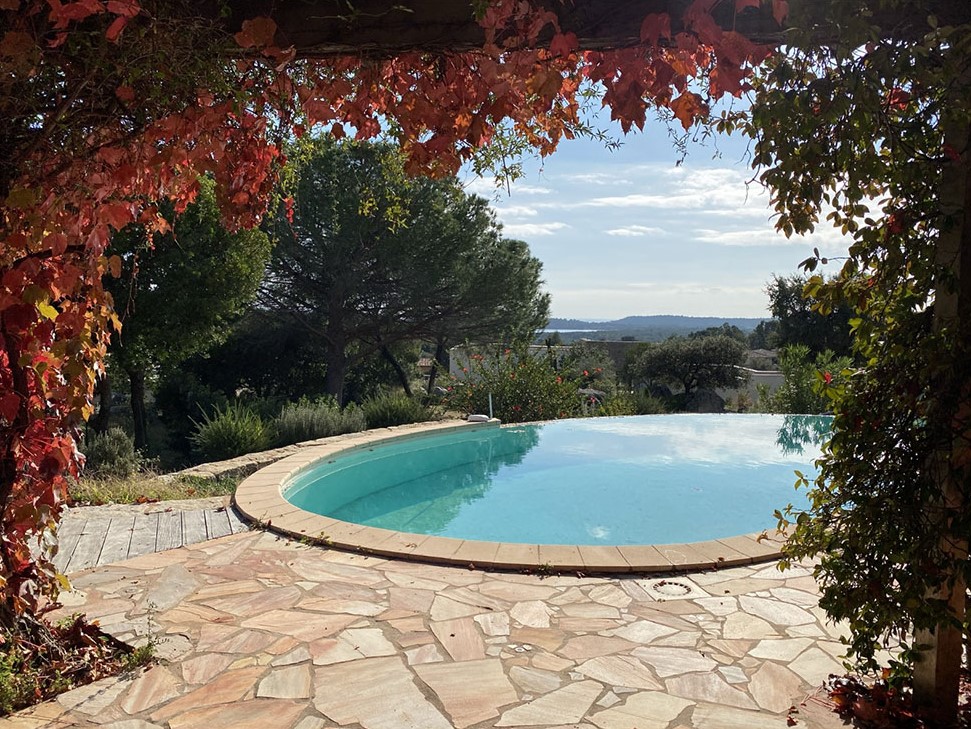Flora & Fauna auf Korsika
Artenreichtum bei Pflanzen & Tieren
Die verschiedenen Klimazonen in den unterschiedlichen Höhenlagen Korsikas beherbergen zahlreiche Pflanzen- und Tierarten.
Macchia
Gut die Hälfte der Insel ist vom immergrünen Buschwald der Macchia bedeckt. Wenn diese im Frühling in bunten Farben blüht, verströmt sie einen Duft, der so intensiv ist, dass man ihn sogar auf dem Meer vor den Küsten riechen kann. Die Korsen sagen, dass Napoleon Bonaparte stolz darauf war, allein an diesem Geruch seine Heimatinsel erkennen zu können. Weitere typisch mediterrane Pflanzen, die sich auf Korsika wohlfühlen, sind Lavendel, Myrte, Erdbeerbaum, Zistrose, Thymian, Salbei, Rosmarin, Ginster und Baumheide. Nicht selten trocknen sie in den heißen Sommermonaten vollkommen aus und werden als vorzügliches Brennmaterial Opfer von Wald- und Buschbränden.
Laricio-Kiefer
Die meist verbreitete Baumart auf Korsika ist die Laricio-Kiefer, die bis zu 50 m hoch wachsen und an die 1000 Jahre alt werden kann. Gerade in höheren Lagen zwischen 800 und 1800 Metern gibt es viele Kiefernwäldchen, da diese Baumart mit dem Nötigsten auskommt und problemlos auch längere Frostperioden übersteht. Bekannt ist Korsika auch für die vielen Edelkastanienbäume, die etwa 40.000 ha Fläche der Insel bedecken. Sie wurden von den Genuesern in großem Stil angepflanzt, um die immer wieder auftretenden Hungersnöte zu lindern. Ebenso wurde der Eukalyptus bei seiner Vermehrung künstlich unterstützt: Die bis zu 40 Meter hohen Bäume mit ihrer silbrig-grauen Rinde verdunsten sehr viel Wasser, was sie zu idealen Helfern bei der Trockenlegung von Sümpfen und der damit verbundenen Eindämmung der Malaria machte.
Korkeichen
Zur Gewinnung von Naturkork werden die Korkeichen alle 10 bis 20 Jahre geschält. Außerdem gedeihen bis auf eine Höhe von 400 Metern zahlreiche weitere Bäume und Pflanzen, die für den Mittelmeerraum typisch sind: Platanen, Dattelpalmen, Zypressen, Ölbäume, Oleander und Mimosen; es finden sich Agrarkulturen zum Anbau von Zitrusfrüchten und Pfirsichen, Feigenplantagen, Mandelbäume und Weinberge.
Korsische Tierwelt
Die vielfältige korsische Tierwelt beheimatet einige Exemplare, die endemisch, also ausschließlich auf Korsika anzutreffen sind. So leben die Vogelart Korsenkleiber sowie die Amphibien Korsischer Gebirgsmolch, Korsischer Feuersalamander und Korsischer Scheibenzüngler alle in den mittleren und großen Höhenlagen der Insel, während die nicht-endemischen Tierarten überwiegend weiter unten zu finden sind. Hier gibt es Geckos, Sumpfschildkröten und Nattern; Gottesanbeterinnen, Taranteln und Schwarze Witwen; Forellen, Aale und Süßwassergarnelen; Adler, Bussarde und Falken. Als wichtige Station des europäischen Vogelzugs lassen sich von Oktober bis März große Schwärme von Watt- und Wasservögeln beobachten, die in den Lagunen an der Ostküste einen Reisestopp einlegen. Ganz andere Reisende kann man mit etwas Glück an der Straße von Bonifacio und am Cap Corse sehen. Hier ziehen gelegentlich Pottwale und Delfine vorbei.
Aufgrund der Insellage, der gebirgigen Landschaft und der ehemals starken Bejagung ist die Säugetierfauna Korsikas nicht sehr vielfältig. Am häufigsten anzutreffen ist das Wildschwein; in den Macchia-Landschaften gibt es Hasen, Mauswiesel, einige Wildkatzen und Füchse. Von bereits ausgerotteten Arten wie dem Korsischen Zwerghirsch oder dem Europäischen Mufflon, das zuvor 8.000 Jahre auf Korsika heimisch war, konnten einige Tiere auf Sardinien überleben und wurden inzwischen wieder angesiedelt.
